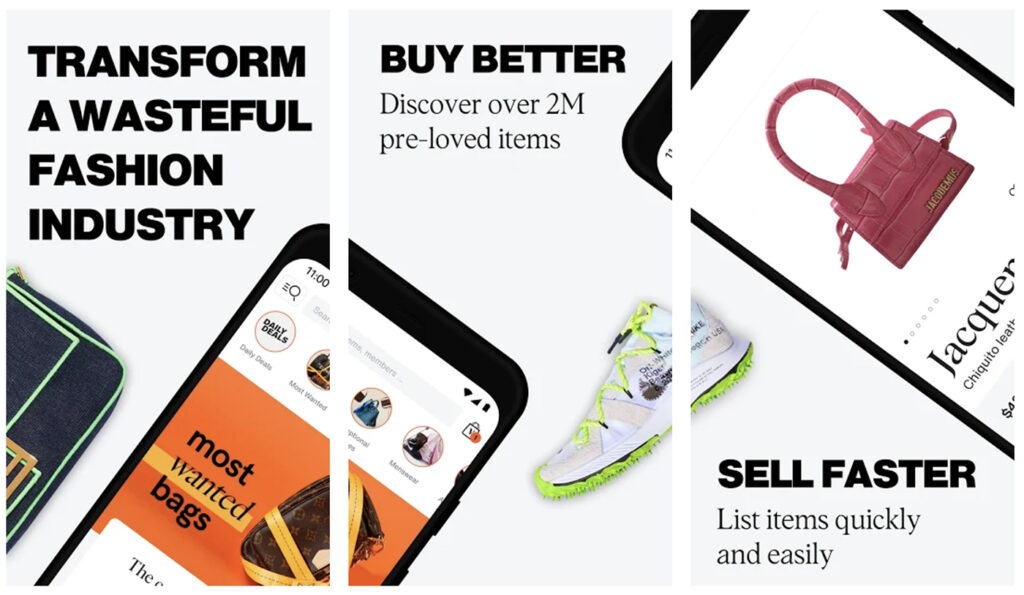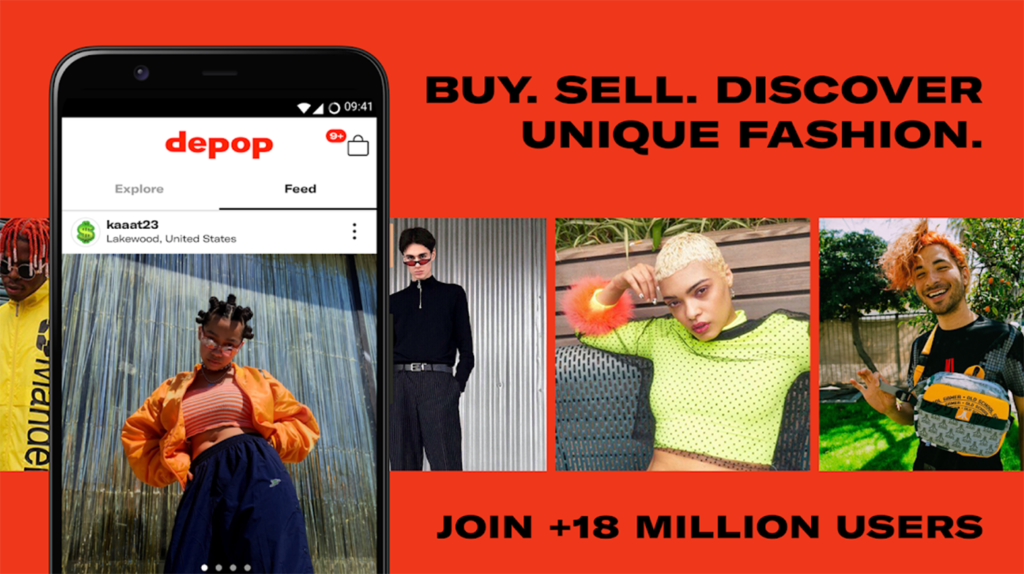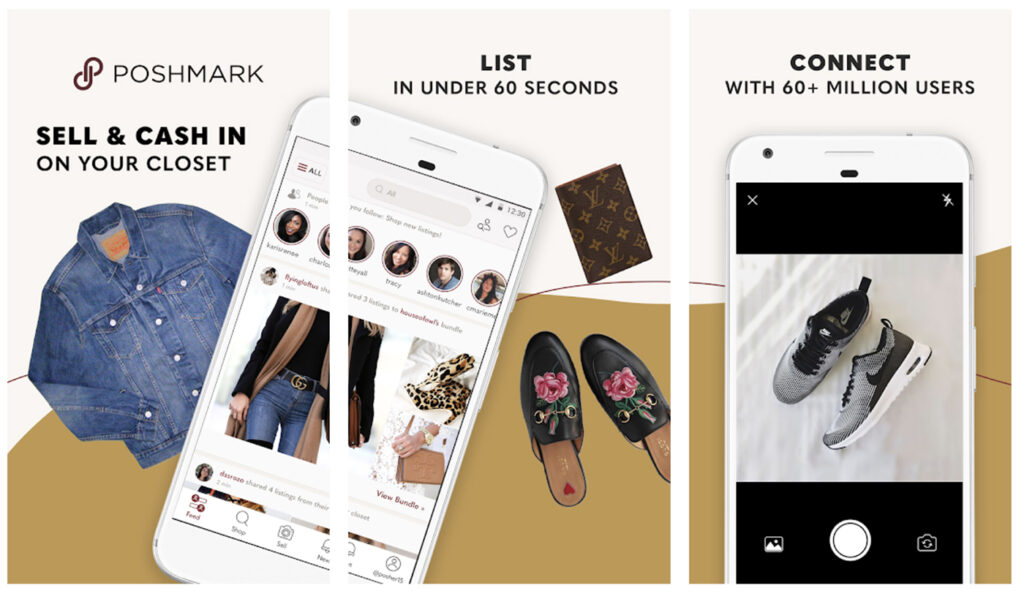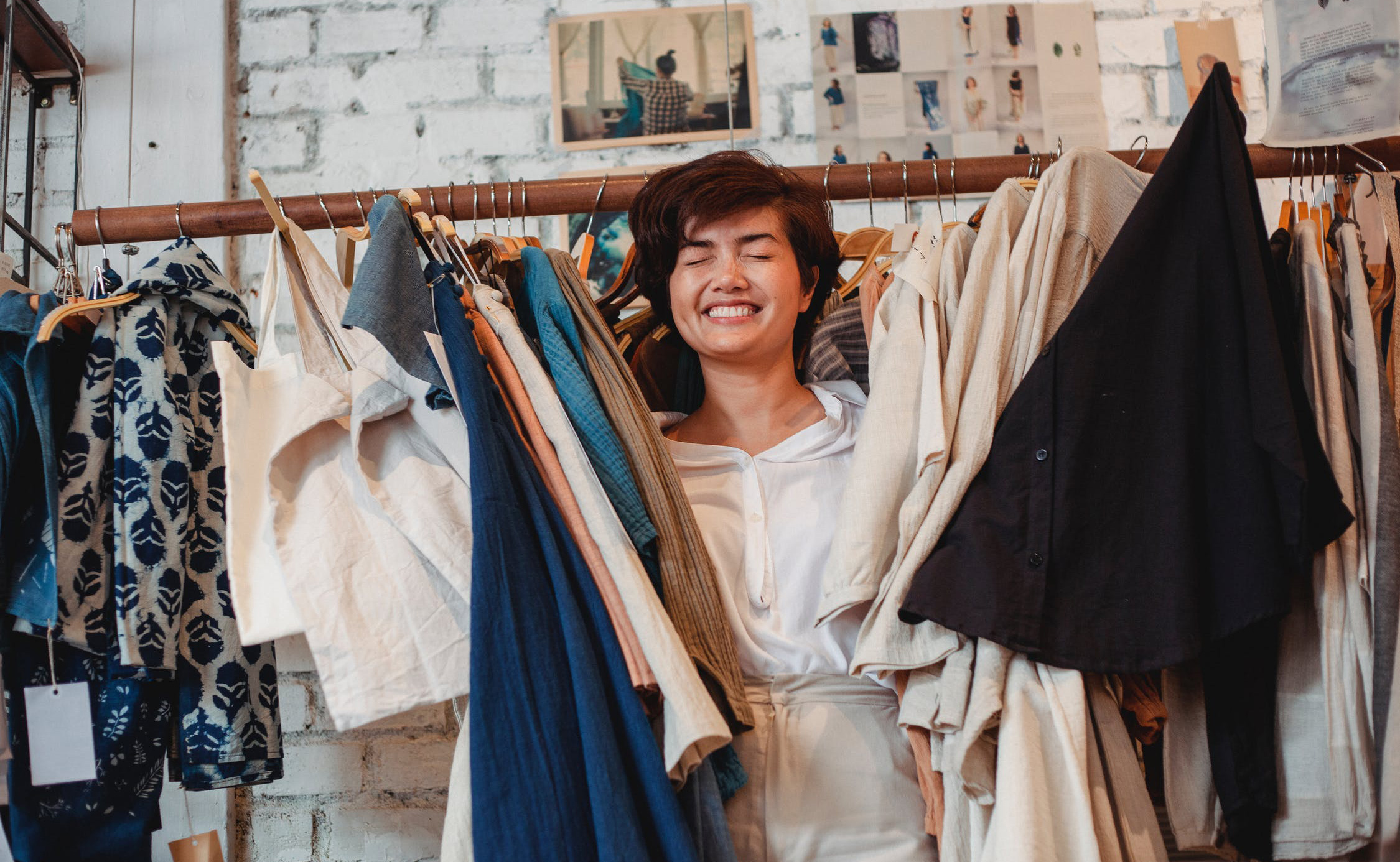Today, second-hand fashion is making its way more and more among consumers, above all the younger ones. Buying used clothes reduces the environmental impact, disfavors the conditions of exploitation of labor and saves money.
In a study conducted in collaboration with BCG, the luxury secondhand sales platform “Vestiaire Collective” discovered the five main reasons that push buyers and sellers to invest in the used fashion market. Customers seek accessibility, designing fashion also as an investment; they pursue variety; they are looking for one-of-a-kind pieces from well-known brands, or limited edition items, missing in stores for a long time.
When you think about the world of second-hand flea markets or small vintage shops usually come to mind. However, today there are numerous smartphone apps and websites that facilitate the purchase of used and unique pieces. The best known in Italy at the moment are Vestiaire Collective and Vinted.

Vestiaire Collective is a French platform that allows you to upload clothing, shoes and accessories that are checked and authenticated by the staff before they can be put on sale. Vinted is a second-hand fashion app that allows you to sell clothing, shoes, accessories but also home accessories and books without commissions and with low shipping costs.
In addition to these, here are the 7 second-hand fashion apps you should download.
Armadioverde
Armadioverde is a second-hand fashion app founded by David Erba and Eleonora Dellera, a working and de facto couple. With the birth of their children, the two realized that the children’s clothes had a short duration and were then thrown away: hence the input to create Armadioverde.
The app is based on the concept of circular economy and uses an online service at home, which is quick and easy. After decluttering the wardrobe, just send the clothes you no longer wear to Armadioverde. Courier, evaluation and photos are all paid by the platform. Once the package is received, the staff evaluates the quality of the products and assigns stars, the app’s virtual exchange currency.
The stars are assigned according to the brand, size and type of the garment and can be exchanged on the platform and used to buy new clothes, adding a few euros. The items that Armadioverde does not accept are donated to the HUMANA association.
Enjoei
Enjoei is a Brazilian second-hand fashion app born in 2009. The app (but also the website) allows users to create a real online store.
To sell on Enjoei, you must be over 18 and have a bank account. By registering, a private shop is created where you can advertise your products. The income you receive is net of shipping and advertising costs.
The platform is popular for both women’s and men’s clothes, shoes and accessories, but the sale / purchase of household items, furniture, smartphones, electronics is also allowed.
Depop
Depop is perhaps the best known second-hand fashion app among young people. The app, founded by the Englishman Simon Beckerman, is a vintage paradise, where everything regains its value. With a few taps you can sell or buy clothing, accessories but also objects and books.

To sell and buy on Depop it is necessary to have a PayPal account. Both incoming and outgoing transactions on the app take place only through this payment method.
Shpock
Shpock was launched in September 2012. Second-hand app used mainly by the under 35s, it shows ads based on location.
You can sell (almost) anything on this app. The advertisements are disseminated on social media and there is the possibility to set alerts for products of interest. Users can also purchase Premium services to highlight their items for sale.
Once a buyer identifies an item they are interested in, they can contact the seller directly, negotiate the price and define the purchase details.
Poshmark
Available just in the United States, Poshmark is a fashion marketplace which allows, via app, to sell and buy clothes and accessories.
Poshmark is a sort of Instagram where you can buy all the items “published” by users. The most interesting element is that “Posh-Parties” can be organized on the platform, real virtual vintage markets during which items are bought and sold between participants. Celebrities like Ashton Kutcher and DJ Khaled have put their garments up for sale on Poshmark and donated the proceeds to charity.

ThredUp
Available just in the United States, at the beginning ThredUp it specialized only in children’s clothing, but recently added women’s clothing as well.
To sell on ThredUp just register and you will receive a prepaid envelope to fill with clothes. The site takes care of photographing, evaluating and listing the accepted articles. If the garments are “trendy, in season and in great condition”, ThredUp pays in advance. If, on the other hand, the pieces are in excellent condition but out of season, the site pays only after the sale.
Carousell
Carousell was launched in 2012 by three Singaporean university students, but now operates in more than 10 countries. The app follows the C2C (Consumer-To-Consumer) model; initially only the sale of electronic equipment was possible, which was then extended to many other categories such as clothing and cars.
Carousell allows users to buy and sell items online by uploading a photo with its description attached. From the image upload it is possible to automatically identify the reported objects, add the categories to which they belong, the reference tags and obtain an indication of the recommended selling price.





